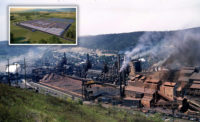Vest bases his view on the “turnout and energy” at an NAE workshop in September that drew more than 50 engineering practitioners and academics to debate the LL “imperative,” identify barriers to accessing and delivering learning and recommend solutions, which may involve ramping up the issue as a national priority in Washington.
“It's not about maintaining a license but looking at the issue holistically,” says James Porter, retired engineering vice president at DuPont and chairman of NAE's LL steering committee. “[Lifelong learning] is a lot different than continuing education. It's not just when the boss sends you,” he says. While licensing mandates push civil engineers to pursue more learning than other disciplines, Vest says an issue may be “whether we are doing a world-class job with the educational upgrades that are required for relicensing. I hope the answer is yes. If not, there is work to be done.”
Nelson Baker, a workshop participant who is vice provost for distance learning and professional education at the Georgia Institute of Technology, Atlanta, says it is difficult to track progress in professional development because requirements are not uniform among states and there is no clearinghouse for data. Baker is tracking efforts in other countries as president of the International Association for Continuing Engineering Education, an 80-member global consortium that will next meet in Beijing in May.
In addition to a lack of standardization, workshop participants identified a host of other LL barriers from costs and too many program choices to employer ambivalance (see charts).
Too Little Time
“The challenges are related to access. For a working engineer with a commute and a family, time is an issue. And if it's formal training being considered, who will pay?” says Joseph Helble, dean of the Thayer School of Engineering at Dartmouth University, Hanover, N.H. “Is the employer supportive? Does a manager encourage continuing education, or is it solely an employee's responsibility? Proximity to a campus is also an issue for formal training. For distance-learning programs, finding high-quality, low-cost, professionally recognized opportunities was identified as a real challenge.”
Virginia Tech's De la Garza points to another barrier for senior practitioners: fear of failure.
“Why start all over again and retool when you don't have enough years in front of you?” he says. Bill Badger, veteran engineering professor at the Del E. Webb construction school at Arizona State University, points to industry fragmentation. “It's hard to identiy and connect with our target audience,” he says.
Connie Crawford, senior vice president at engineer Louis Berger Associates, believes that mentoring future engineers should count toward lifelong learning. “Students need adult learners, and you learn a lot, too,” she says. “They ask you questions, and you have to constantly stretch.”
Russell sees the explosion of online delivery leading to “deeper and better learning” and a more effective use of faculty time However, he notes hurdles such as faculty aversion to change, the added expertise and support needed to deliver content and higher upfront investment. “Also, you need to make sure you have time for engagement with students,” he says.
Even so, engineers are seeking out new learning, even in advanced career stages. Steven Reid, 54, opted for the University of Wisconsin's online graduate engineering program as CEO of a small scrubber design firm based in Marietta, Ga. “If you take a [cross section] of most engineers out there, they're not thinking about furthering their education,” he says. “I realized I needed more training. This is not just a purchased degree online.”




Post a comment to this article
Report Abusive Comment